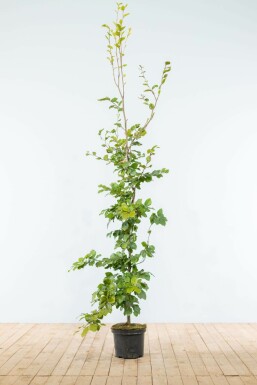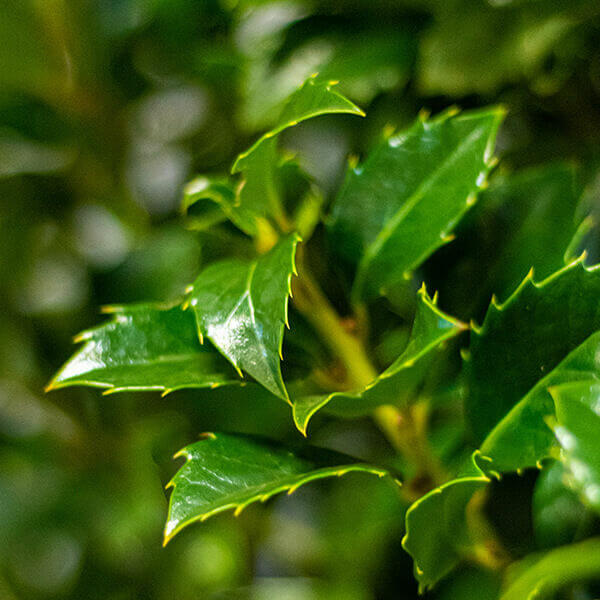Best Hedging Plants For Texture
Boost your garden's appeal with lush hedge ranges such as Yew (Taxus), Thuja, Laurel, Photinia, and Bamboo, celebrated for their structural stability and environmental benefits.
Yew and Thuja provide evergreen protection and winter durability, while Laurel uses rapid development and broad, aromatic leaves.
Photinia adds seasonal appeal with its lively red foliage, and Bamboo lends a low-maintenance, peaceful atmosphere.
These hedges improve air quality, minimize noise, and produce tranquil, personal areas.
Proper planting, spacing, and upkeep make sure energetic growth and environmental consistency.
Check out how these lush varieties can elevate your garden's charm and wellness.
Key Takeaways
Transform Your Garden With Lush Hedge Varieties
- Select Yew for its thick, evergreen development and unequaled durability.
- Go with Laurel for its fast growth and broad leaves, guaranteeing quick personal privacy.
- Pick Photinia for its lively seasonal foliage, which turns a striking dark red.
- Make use of Bamboo for a low-maintenance, winter-hardy hedge with aesthetic appeal.
- Space plants 2-3 per meter and prune regularly for optimal development and health.
Popular Hedge Plants
When changing a garden with lavish hedge ranges, it's important to consider popular hedge plants such as Yew, Thuja, Laurel, and Photinia due to their unique characteristics and benefits.
Yew (Taxus) is highly esteemed for its longevity and thick, green development, making it a prime option for sustaining landscapes.
Thuja is kept in mind for its evergreen foliage and robust winter season resilience.
Photinia includes seasonal vibrancy with red leaves that darken gradually, developing vibrant visual appeal.
Laurel provides quick development and aromatic, broad leaves, suitable for quick privacy.
Additionally, Bamboo is an outstanding choice for ambiance, offering a low-maintenance, winter-hardy option that boosts the garden's visual with its sophisticated, swaying walking canes.
These choices accommodate a variety of horticultural requirements and choices.
Advantages of Garden Hedges
Garden hedges use a plethora of advantages, making them a valuable addition to any landscape. These natural barriers are affordable to implement and supply considerable wind protection, boosting air flow and contributing to sound reduction. The thick foliage of hedges like Thuja and Beech guarantees privacy by blocking exposure, creating a secluded and peaceful environment.
Hedges also play a crucial function in microclimate policy, providing a steady environment that fosters plant development and reduces temperature level changes. Their detailed leaf structures filter contaminants, enhancing air quality and contributing to a healthier garden ecosystem.
Furthermore, hedges stand out in noise decrease, absorbing and deflecting acoustic waves to lower ambient noise levels. This dual performance of providing both acoustic and visual personal privacy boosts the general harmony and aesthetic appeal of any garden.
Planting and Maintenance Tips
For an effective hedge, meticulous preparation of the planting area is vital. Ensure the soil has appropriate pH and drain to support strong root development.
Space the plants properly for the chosen species. Water the hedge often throughout its preliminary growth phase, changing as required with seasonal changes.
Implement a methodical bug control and disease prevention technique, utilizing natural or chemical treatments when required. Routinely check for aphids, mites, and fungal infections.
Apply mulch to keep wetness and suppress weeds. Seasonal pruning promotes thick development and air circulation, important for plant health.
Following these standards will help you cultivate a vibrant, well-kept hedge that improves the appeal of your garden.
Spacing and Trimming Guidelines
Spacing and Trimming Guidelines
Appropriate spacing and cutting are crucial for cultivating healthy, visually appealing hedges. Adequate spacing ensures each plant receives sufficient nutrients, light, and airflow.
Follow these standards for optimum hedge upkeep:
- Spacing: Position hedge plants 2-3 plants per meter to motivate robust development.
- Pruning Strategies: Routine pruning is necessary for keeping wanted hedge height and shape. Cut brand-new development in summertime and cut back older wood during winter.
- Seasonal Care: Adjust cutting schedules and approaches according to seasonal requirements to ensure plant health.
- Hedge Height: Frequently screen and cut to preserve the desired hedge height and accomplish uniform aesthetics.
Adhering to these actions will ensure your hedge prospers, enhancing both the appeal and performance of your garden.
Picking the Right Hedge
Selecting the Right Hedge
Choosing the proper hedge involves examining factors such as fully grown height, foliage density, and ecological durability. Effective hedge plant selection requires understanding each types' growth qualities and site-specific flexibility.
For example, Yew (Taxus) offers excellent durability and thick development, while Thuja is notable for its winter durability. In addition, thinking about upkeep requirements is vital; fast-growing species like Laurel or Privet demand routine trimming, whereas low-maintenance alternatives like Bamboo or Ivy might be preferable for those seeking minimal maintenance.
Ecological aspects such as soil type, light availability, and moisture conditions should also guide the selection process. This careful method guarantees the selected hedges will prosper, offering both functional and aesthetic benefits to the garden landscape.
Delivery and Planting Advice
To ensure your hedge plants thrive, they need to be provided by specialized carriers and planted quickly upon arrival.
Follow these important steps for effective planting:
- Soil Preparation: Improve the soil with organic matter to enhance drain and nutrient material.
- Planting Depth: Produce a trench twice the width and equivalent to the depth of the root ball.
- Watering Strategies: Water thoroughly after planting, keeping the soil regularly wet but not saturated.
- Mulching: Use a layer of mulch to keep moisture and reduce weeds.
Client Support and Service
Offered the vital function of timely help in horticultural pursuits, our client support team is available 6 days a week through telephone, email, and social media to use professional guidance and swiftly resolve any concerns. Their dedication to fast reaction times ensures client complete satisfaction by solving inquiries connected to plant health, ideal planting approaches, and maintenance schedules.

Action Time
----------------------
Telephone
Within 24 hours
This extensive support group, enhanced by an outstanding 9.3/ 10 client rating, highlights our commitment to boosting the gardening experience for each client.
Often Asked Questions
The Length Of Time Does It Take for Hedge Plants to Develop?
Hedge plants typically need one to three years to end up being fully developed, with the exact period varying by types and growing conditions.
Effective care throughout this important period is necessary for robust growth. Constant watering, vigilant weed control, and suitable fertilizer application are essential in promoting strong root development.
For instance, fast-growing species like Laurel may develop more quickly, while slower-growing ranges such as Yew may take longer. Diligent maintenance speeds up the establishment process, leading to thick and healthy hedges.
What Are the Best Hedge Plants for Personal Privacy?
The concern of the best hedge plants for privacy includes examining evergreen and deciduous options.
Evergreen hedges like Thuja, Laurel, and Cypress offer year-round protection, guaranteeing continuous privacy.
In contrast, deciduous hedges such as Beech provide seasonal personal privacy, shedding leaves in cooler months.
Key maintenance suggestions for privacy hedges include regular cutting, fertilizing in spring, and appropriate spacing-- normally 2 to 3 plants per meter.
In addition, constant watering and thorough weed elimination are crucial for promoting healthy, dense growth.
Can Hedge Plants Attract Wildlife to My Garden?
Yes, hedge plants can attract wildlife to your garden by providing vital advantages like shelter, food, and nesting websites, thereby enhancing regional biodiversity. For circumstances, yew, holly, and laurel are exceptional for bring in birds, while ivy supports a range of bugs.
However, it is essential to note that there are some downsides, such as increased upkeep to manage bugs and routine upkeep. Carefully picking and preserving hedge varieties can assist stabilize these benefits and downsides, ultimately cultivating a dynamic and sustainable ecosystem in your garden.
Exist Any Flowering Hedge Plants Available?
Yes, there are flowering hedge plants readily available that can improve the beauty of your garden.
For instance, Elaeagnus, also known as Olive Willow, produces aromatic white flowers in the fall, including a touch of sophistication.
Photinia, another popular option, showcases dynamic red leaves that develop into a rich green, developing a dynamic visual result throughout the seasons.
To ensure these plants grow, it's important to practice correct pruning methods and seasonal upkeep, such as trimming brand-new growth in the summertime and cutting down in the winter.
These procedures will help preserve the health and visual appeal of your blooming hedges.
How Do I Prevent Insects in My Hedge Plants?
To avoid pests in hedge plants, utilize natural bug control methods and maintain appropriate hedge care. Present beneficial bugs like ladybugs, which victimize harmful insects, to produce a well balanced ecosystem.
Regularly examine your hedges for indications of problem and quickly get rid of any afflicted parts to avoid the spread. Ensure the health of your hedges by applying balanced fertilizers and offering sufficient water.
Use mulching to keep soil wetness and correct spacing to decrease plant tension and promote robust development. These practices jointly assist in minimizing pest issues and preserving a healthy hedge.
Conclusion
In essence, selecting the best hedge varieties such as Yew, Thuja, and Laurel can transform any garden into a tranquil haven. These plants provide year-round plant, boost visual appeal, and deal practical benefits like noise decrease and wind defense.
Correct planting methods, accurate spacing, consistent watering, and seasonal cutting are essential for ideal growth.
Trustworthy delivery services and expert customer assistance guarantee a seamless experience from purchase to planting, making it easier than ever to raise your outside space.
Garden hedges offer a plethora of advantages, making them get more info a valuable addition to any landscape. These natural barriers are cost-efficient to carry out and provide significant wind defense, enhancing air blood circulation and contributing to sound reduction. The thick foliage of hedges like Thuja and Beech ensures personal privacy by obstructing presence, producing a tranquil and remote environment.

Pruning Techniques: Routine pruning is necessary for keeping wanted hedge height and shape. Cut new growth in summer and cut back older wood throughout winter season.